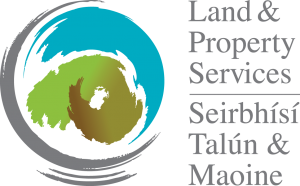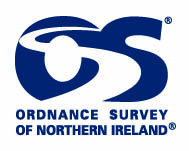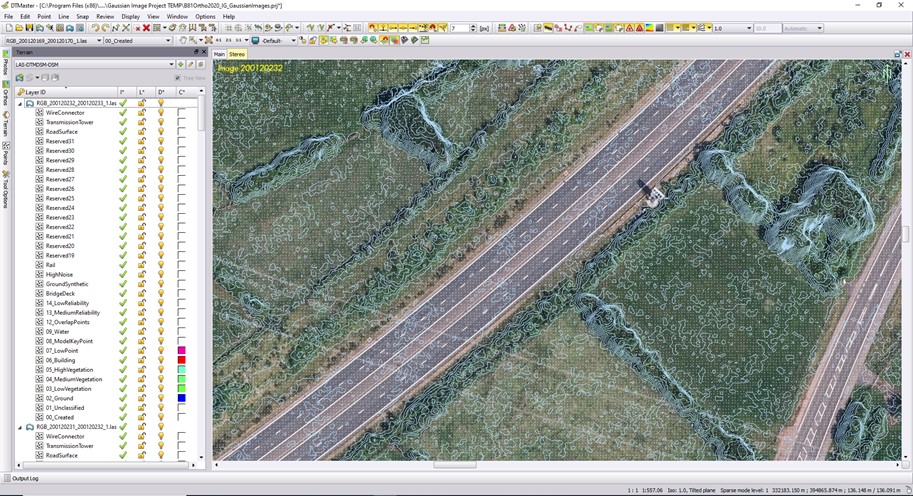From Raw Data to National Map Updates
with a Single Platform


Streamlining Photogrammetry Processes for Ordnance Survey of Northern Ireland
Every day, leaders at all levels of government make decisions about legislation, infrastructure, transportation, and other issues that affect the
citizens within their borders. As diverse as these types of decisions are, they all have something in common: location.
Answering the question of “where” for an entire nation is often a task for national mapping agencies. Ordnance Survey of Northern Ireland (OSNI), part of Land & Property Services (LPS), manages this task for Northern Ireland.
LPS collects, processes, and manages land and property information in support of economic and social development. OSNI’s part in that role includes numerous mapping and location data responsibilities, from data gathering and editing to production of ortho photography and creation and updating of Digital Surface and Digital Terrain Models.
While OSNI’s work results in a seamless and complete view of Northern Ireland, the processes and systems it employed post-implementation of a new OSNI Data Model were not as well-aligned. In fact, OSNI used two siloed systems, where vector data was captured and edited in a stereo photogrammetry system and data attribution and validation were carried out in another system.
To overcome the inefficiencies and challenges from disconnected systems, OSNI needed a GIS software platform that could:
- Provide aerial triangulation, stereo editing, digital elevation model generating and ortho production.
- Operate within OSNI’s new Data Model, OSNI Fusion and integrate with the existing workflow system.
- Integrate and function efficiently with the high resolution aerial photography and related data output formats created with OSNI’s existing hardware.
Using One Cost-Effective Platform

OSNI selected IMGS, a long-time Hexagon partner in Ireland, to implement a single, end-to-end, integrated software platform to meet the group’s requirements The result was a platform based on two tools from Hexagon, the GeoMedia GIS Solution and the ImageStation production mapping and photogrammetry solution.
Ultimately, OSNI selected IMGS and Hexagon for two reasons: not only did the team meet all the technical requirements with just one platform, but they also provided the most cost-effective solution. “We now have a single software package that handles image processing, aerial triangulation, generation of Digital Elevation Models (DTM and DSM), and the production of ortho photography,” said Darren Lawlor, Remote Sensing Operations Manager at OSNI. “All of these processes have been brought together under the GeoMedia/ ImageStation platform, allowing a seamless flow from processed imagery to final product creation.”
Integrated with OSNI’s existing workflow system (1Spatial’s 1SMS suite), the platform provides the tools and functionality for editing OSNI Fusion data, complying with the requirements of the OSNI Data Model through FME Server validation. This ensures that data is validated and corrected before being committed to the OSNI Fusion database.
With the platform, OSNI processes aerial sensor imagery into the national ortho imagery for Northern Ireland. This imagery is then used to update a national large-scale vector map of Northern Ireland – the sole authorised national vector map of the area – which is used by numerous agencies for GIS purposes, photogrammetry, monoplotting, or terrain map production from digital aerial imagery. It answers the question of “where” for Northern Ireland.
Bringing Geospatial Data and Operational Success Closer Together
The solution from Hexagon and IMGS has brought together previously siloed systems into a seamless new platform, benefiting all organisations in need of quality mapping products in Northern Ireland.
“It has provided LPS with a consolidated platform that has enabled LPS to continue its production and supply of image derived products, driven efficiencies within sub-processes through automation, and has allowed LPS to implement a new data model by integrating with the existing workflow management system,” said Lawlor.
With the platform, OSNI has shortened the length of time between data creation and operational use.


